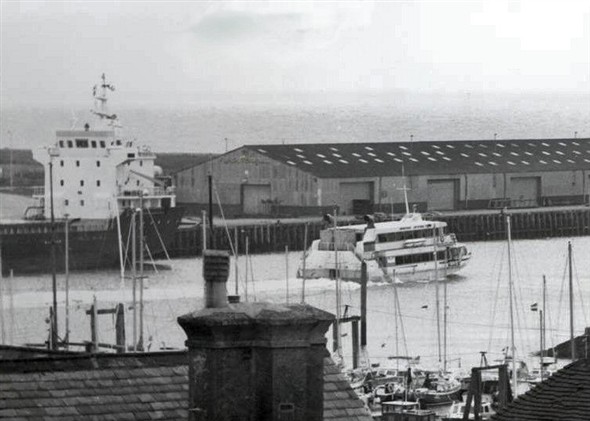THE SEAJET
A very short-lived service in 1982.
By Andy Gilbert
Our Newhaven was recently reminded of the fact that there was a fast hydrofoil ferry service from Newhaven to Dieppe back in the 1980's. With a little help from Newhaven Museum, I've managed to find the details.
Seajet was an independently run Boeing Jetfoil craft and operated from a specially constructed pontoon on the Railway Quay near the Customs sheds.
Seajet operated its maiden service on Sunday 15th August 1982, albeit 1 1/2 hours late. Alas it proved itself quite unsuitable for the route and the service went under in just three weeks.
Similar attempts to run an identical Jetfoil craft, Normandy Princess, from Brighton Marina to Dieppe lasted somewhat longer, but that service also eventually failed. There was one incident where bad weather (I think) meant that the craft had to come into Newhaven rather than Brighton. Alas the 'politics' between its operators and the port of Newhaven resulted in the passengers having to remain on board for the duration of the vessel's stay!

Seajet maiden departure
Kind permission of Peter Bailey, Newhaven Museum
Seajet arrives
Kind permission of Peter Bailey, Newhaven Museum